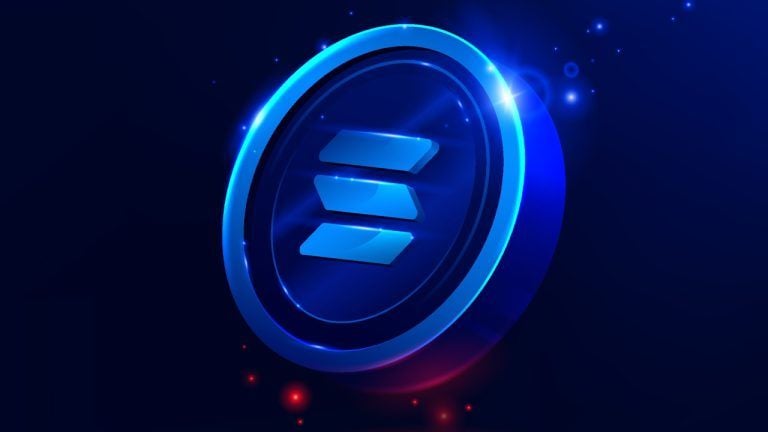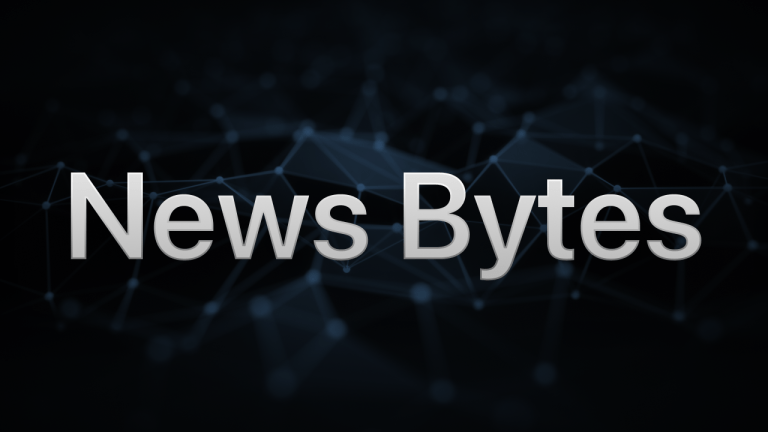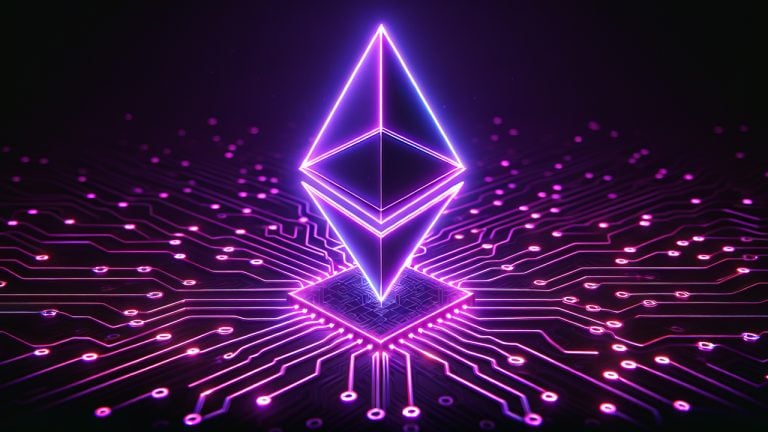
Ethereum price followed the broader crypto market sell-off, but its longer term price weakness is driven by network-specific factors.
Ether (ETH) prices declined by 9.6% from Oct. 20 to Oct. 23, following a strong rejection at the $2,700 level. This move erased the gains of the previous 10 days, and as Ether now stabilizes near $2,500, its 30-day performance remains negative, down by 6%.
The chance of ETH reclaiming the $2,800 support is diminishing and onchain data suggests that high transaction fees are pushing activity away from the Ethereum network, ultimately reducing demand for native staking.
Total crypto capitalization (blue) vs. Ether/USD (green). Source: TradingView
 While the biggest blockchain bridge hacks have centered on private key mismanagement, according to Joshua Tobkin, CEO of Supra, smart contract errors and cryptography implementation issues also contribute to cybercriminals’ success. Tobkin said while bridges are poised to play an increasingly critical role in blockchain interoperability, their control by a small number of validators poses […]
While the biggest blockchain bridge hacks have centered on private key mismanagement, according to Joshua Tobkin, CEO of Supra, smart contract errors and cryptography implementation issues also contribute to cybercriminals’ success. Tobkin said while bridges are poised to play an increasingly critical role in blockchain interoperability, their control by a small number of validators poses […]

This incident serves as a reminder of the ever-present need for vigilance and proactive measures in the rapidly evolving world of blockchain technology.
Casper Network, a blockchain platform recognized for its approach to decentralized applications, experienced a security breach, resulting in a temporary halt of all operations to address and contain the issue.
The Casper Network team discovered the breach and promptly collaborated with validators to suspend the network. This measure was implemented to reduce the impact of the security breach and prevent potential exploitation. The network halt ensures that transactions cannot be processed until the vulnerability is addressed.
The Casper Association, Casper Labs, and the community of validators are working together to address the issue. This joint effort involves pooling resources and expertise to find a solution efficiently.
 According to stablecoin transfer volume metrics divided by blockchain, Solana’s daily transfer volume has decreased from a range of $75 billion to $100 billion daily to around $7 billion daily. Additionally, a crypto advocate expressed doubts about the legitimacy of Solana’s previous stablecoin transfer volumes, indicating that the metrics were highly overstated. Stablecoin Metrics Reveal […]
According to stablecoin transfer volume metrics divided by blockchain, Solana’s daily transfer volume has decreased from a range of $75 billion to $100 billion daily to around $7 billion daily. Additionally, a crypto advocate expressed doubts about the legitimacy of Solana’s previous stablecoin transfer volumes, indicating that the metrics were highly overstated. Stablecoin Metrics Reveal […] Solana has recommended validators in the network upgrade to the latest Mainnet Beta 1.18.15, which includes several fixes to address network performance and stability. The release includes a central scheduler functionality that can be turned on optionally, focused on solving performance issues identified when there is network congestion. According to Solana Beach, a validator statistics […]
Solana has recommended validators in the network upgrade to the latest Mainnet Beta 1.18.15, which includes several fixes to address network performance and stability. The release includes a central scheduler functionality that can be turned on optionally, focused on solving performance issues identified when there is network congestion. According to Solana Beach, a validator statistics […] Solana validators have voted to pass Solana Improvement Document number 96 (SIMD-0096), which proposes that 100% of priority transaction fees will be awarded to validators. This breaks the current model that passes only 50% of these funds to validators, while the other half gets burned. According to early estimations, this will increase inflation by 4.6% […]
Solana validators have voted to pass Solana Improvement Document number 96 (SIMD-0096), which proposes that 100% of priority transaction fees will be awarded to validators. This breaks the current model that passes only 50% of these funds to validators, while the other half gets burned. According to early estimations, this will increase inflation by 4.6% […] Recent data reveals that over 27% of all ether, amounting to 32,472,720 ethereum, is currently staked, as interest in this activity has heightened significantly within the past year. Liquid staking derivative (LSD) protocols have locked in more than $40 billion, with Lido Finance holding $28.77 billion of that sum. Staking Captures 27% of Ethereum Supply; […]
Recent data reveals that over 27% of all ether, amounting to 32,472,720 ethereum, is currently staked, as interest in this activity has heightened significantly within the past year. Liquid staking derivative (LSD) protocols have locked in more than $40 billion, with Lido Finance holding $28.77 billion of that sum. Staking Captures 27% of Ethereum Supply; […]
SOL price has started to cool off as investors potentially question the reasons for the most recent double-digit rally.
Solana (SOL) experienced a notable 36.6% increase in value between Oct. 30 and Nov. 2. However, SOL’s failure to breach the $44.50 mark resulted in a 10% correction down to $40 on Nov. 6. This movement has left many investors pondering whether the ecosystem growth and network activity support Solana’s present $16.9 billion market capitalization.
Solana's peak at $44.50 on Nov. 2 was the highest it had reached since August 2022, and coincided with the Solana Breakpoint 2023 global conference held in Amsterdam. The price hype during this period even prompted BitMEX co-founder Arthur Hayes to admit to being a "degen" and invest in SOL, despite referring to the token as "just a meme."
During the Breakpoint conference, the Solana Foundation unveiled the testnet launch of Firedancer, a new client aimed at enhancing speed, reliability, and reducing hardware requirements for validators, addressing a longstanding criticism of this layer-1 blockchain that offers parallel computing for smart contracts.
Additionally, on Oct. 31, the Solana Foundation announced the availability of its network dataset on Google Cloud BigQuery, a serverless data warehouse solution with built-in machine learning and artificial intelligence. This enables developers and companies to access archival data and analytical insights transparently and securely.
On the development front, the Solana Foundation has maintained a consistent level of activity. This includes the approval by validators in September of the v.1.16 update, which introduced confidential transactions for SPL tokens on the Solana network using zero-knowledge (ZK) proofs.
However, not all news has been positive for Solana despite its token's price performance. For example, on Oct. 17, the decentralized liquid staking protocol, Lido Finance, announced its decision to cease operations on the network, citing unsustainable financials and low fees, which led to a community vote sealing the service's termination.
The central question that lingers is whether the on-chain activity and metrics related to decentralized applications (DApps) support the SOL price hike. Thus, one should analyze how Solana's on-chain data and ecosystem growth compares to its competitors.
Solana's primary DApp metric began showing weakness in September as the network's total value locked (TVL), measuring the amount deposited in its smart contracts, reached its lowest levels in over 2 years on Nov. 5.

Notably, Solana's DApp deposits experienced a 30% decrease in 30 days at 9.83 million SOL. As a point of comparison, Ethereum's TVL in ETH declined by 2% during the same period, while BNB Chain saw an 8% decrease in BNB terms.
Furthermore, Solana's low fees and continued development after the FTX-Alameda Research collapse have not necessarily translated into a large number of active users. Solana's largest decentralized exchange (DEX), Raydium, recorded only 17,380 active addresses in the past 30 days. Similarly, Solana's most widely used game, Star Atlas, had 12,420 unique addresses during the same period.
In contrast, BNB Chain's DEX, PancakeSwap, boasted 513,060 active addresses in the last 30 days, and its Stargate game had 106,400 users. Meanwhile, Avalanche's DEX, Trader Joe, garnered 54,130 active addresses, and its leading game, Galxe, had 32,040 unique addresses.
Perhaps more concerning is the fact that Solana's DApps' volume reached $609 million in the last 30 days, as reported by DappRadar. This number pales in comparison to BNB Chain's $11 billion, Polygon's $5.3 billion, and Avalanche's $727 million in DApps volume.

In addition to these issues, criticism has arisen regarding the need for Know Your Customer (KYC) and Anti-Money Laundering (AML) requirements to become a network validator, as highlighted by user StakeWithPride on a social network.
Related: Multichain inside job? And SOL surges 80% in a month - Finance Redefined
To add to the concerns, X social network user arixoneth revealed that out of 1,997 validators, 1,818 received delegations from the Solana Foundation or Alameda, accounting for nearly 90% of all validators.
2/ I wrote a script to get precise numbers and here is what I got:
— arixon.eth (@arixoneth) October 3, 2023
Out of 1997 validators 1818 received delegations from the foundation & Alameda.
In total they have delegated 106M SOL, 73M from the foundation and 33M from Alameda. pic.twitter.com/Il3eyabeZ8
These participants effectively delegated 106 million SOL from these two entities, raising questions about centralization and dissatisfaction among SOL token holders, both concerning the validators and development subsidies as well as the comparatively small DApps user base in relation to other networks. Ultimately, Solana’s on-chain activity contradicts the recent price surge and does not support further price increases.
This article is for general information purposes and is not intended to be and should not be taken as legal or investment advice. The views, thoughts, and opinions expressed here are the author’s alone and do not necessarily reflect or represent the views and opinions of Cointelegraph.

dYdX completes the launch of its layer 1 proof-of-stake blockchain with the creation of its genesis block by chain validators.
Decentralized cryptocurrency exchange dYdX has launched its layer 1 blockchain with the creation of its genesis block which will operate using native DYDX tokens.
The dYdX Chain is set to distribute all fees to validators and stakers in USD Coin (USDC). This includes trading fees denominated in USDC as well as gas fees for DYDX-denominated transactions or USDC-denominated transactions.
The proof-of-stake (PoS) blockchain network was built using Cosmos’ software development kit and makes use of CometBFT as its consensus protocol. Validators stake DYDX in order to secure the blockchain and carry out governance operations of the network.
The launch of the dYdX Chain network itself spanned a massive number of companies:
— Antonio | dYdX (@AntonioMJuliano) October 26, 2023
@dydx_ops_subdao coordinating genesis & launch generally + hosting indexer & frontend
@dydxfoundation coordinating community governance
@noble_xyz, @circleapp, @coinbase for launching…
Antonio Juliano, dYdX founder, highlighted that the launch of the dYdX Chain hinged on the likes of Circle and Coinbase launching on Cosmos in time for the creation of its genesis block. Juliano previously described dYdX as an "entirely new blockchain built on Cosmos SDK" and the "first-ever decentralized, offchain orderbook". The blockchain is also entirely open-source.
Before the launch of dYdX’s native layer 1 chain, the original DYDX was an ERC-20 token operating on dYdX’s original Ethereum layer 2 protocol. To facilitate the transition to its own layer 1 chain, the dYdX community voted to adopt DYDX as the L1 token of the dYdX Chain, adopt a one-way bridge from Ethereum to the dYdX Chain and to give wrapped Ethereum DYDX (wethDYDX) the same governance utility as ethDYDX in dYdX v3.
As a result of community votes and governance outcomes, the utility of the DYDX token has expanded to be used for staking, securing the network and assisting with governance on the dYdX Chain.
Similar to Ethereum’s transition to PoS, stakers and validators secure and protect the network and receive dYdX protocol feels in proportion to their staked assets. Fees collected by the dYdX Chain protocol are distributed to validators and stakers through the Cosmos distribution module.
An announcement from dYdX highlighted its expectation that the governance on the dYdX chain will be more accessible than its previous, Ethereum-based layer 2 protocol:
“The dYdX Chain does not have the dYdX v3 concept of ‘Proposing Power’; instead, the governance module effectively enables any holder to create a governance proposal with a deposit.”
Provisions to combat spam proposals include minimum deposit thresholds and voting mechanisms with veto powers. Users can only used staked DYDX tokens to participate in chain governance.
Chain validators will also inherit the voting weight of stakers, unless specific stakers opt to vote on proposals individually.
Magazine: Ethereum restaking: Blockchain innovation or dangerous house of cards?

The 22% self-limit rule ensures at least four major staking entities would need to collude in order for the chain to reach finalization.
At least five Ethereum liquid staking providers have either imposed or are working to impose a self-limit rule in which they promise not to own more than 22% of the Ethereum staking market — seen as a move to ensure the Ethereum network remains decentralized.
Among the Ethereum staking providers either already committed or are working to commit to the self-limit rule include Rocket Pool, StakeWise, Stader Labs and Diva Staking, according to Ethereum core developer Superphiz.
Puffer Finance, another liquid staking service, also announced its commitment to the self-limit.
These providers are committed (or are in the process of committing) to self-limit to @Rocket_Pool @stakewise_io @staderlabs @divastaking
— superphiz.eth ️ (@superphiz) August 30, 2023
The proposal presumably aims to address concerns of Ethereum staking becoming increasingly centralized.
As to why the self-limit was proposed at 22%, Superphiz explained that because 66% of validators need to agree on the state of Ethereum, setting the limit below 22% means at least four major entities must collude in order for the chain to reach finalization.
Finality is the point where transactions on a blockchain are considered immutable, supposedly ensuring that transactions within a block cannot be altered.
The idea was proposed by Superphiz in May 2022 when he questioned whether a staking pool would be willing to put the health of the chain before its own profits.
Interestingly, the largest Ethereum liquid staking provider, Lido Finance, voted by a 99.81% majority not to self-limit back in June.
“They have expressed an intention to control the majority of validators on the beacon chain,” Superphiz said in an Aug. 31 post.

Lido currently dominates the Ethereum staking market, accounting 32.4% of all staked Ether, while the next entity, Coinbase, accounts for only 8.7% of the market, according to data from Dune Analytics.

One industry pundit, “Mippo,” explained on Aug. 31 that the self-limit proposal has nothing to do with “Ethereum alignment” — a principle understood to enable credible neutrality and permissionless innovation on Ethereum.
Mippo claimed those trying to push the proposal wouldn’t make way if they were in Lido’s position.
Related: Ethereum is about to get crushed by liquid staking tokens
“Everyone is doing the economically selfish and rational thing here,” Mippo concluded.
Yeah because they have way less market share than that now… easy to chirp from the cheap seats.
— Mippo (@MikeIppolito_) August 31, 2023
This has nothing to do with “Ethereum alignment.” None of these teams would self limit were they in Lido’s place.
Everyone is doing the economically selfish and rational thing…
“Folks in the ETH community should not shame more user-friendly solutions as greedy products,” said another observer.
However, others were more wary of the potential centralization issues at hand, describing Lido’s market share dominance as “disgusting and selfish.”
Magazine: DeFi Dad, Hall of Flame: Ethereum is ‘woefully undervalued’ but growing more powerful